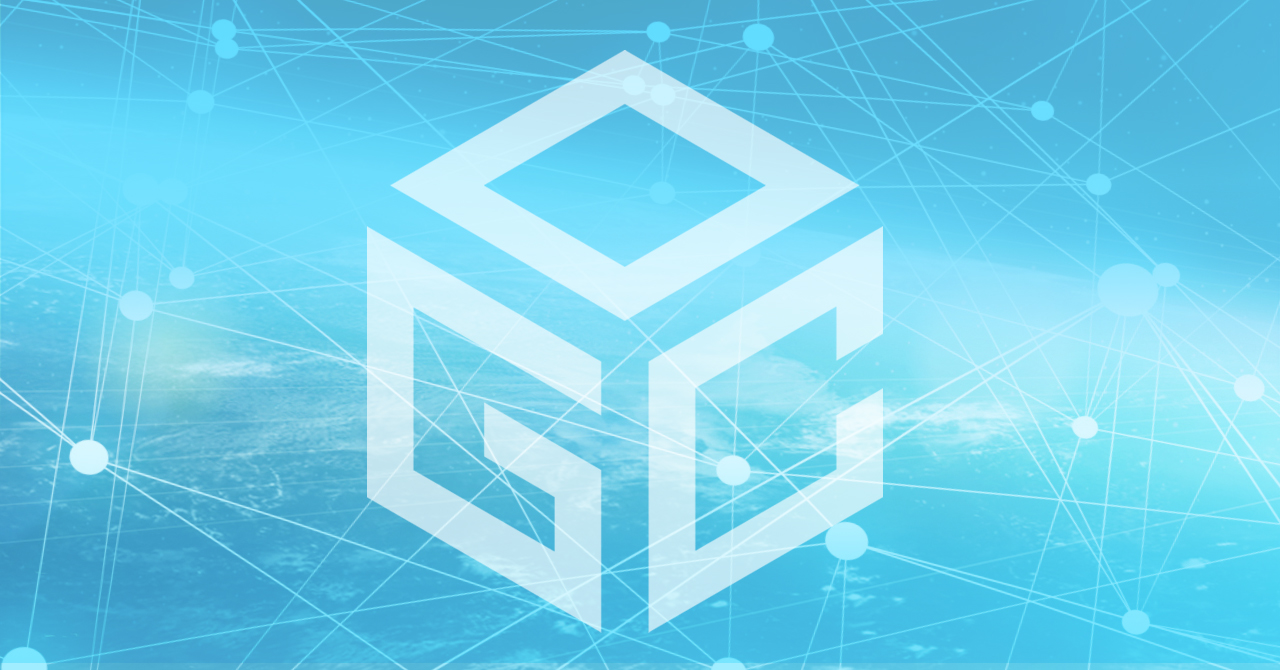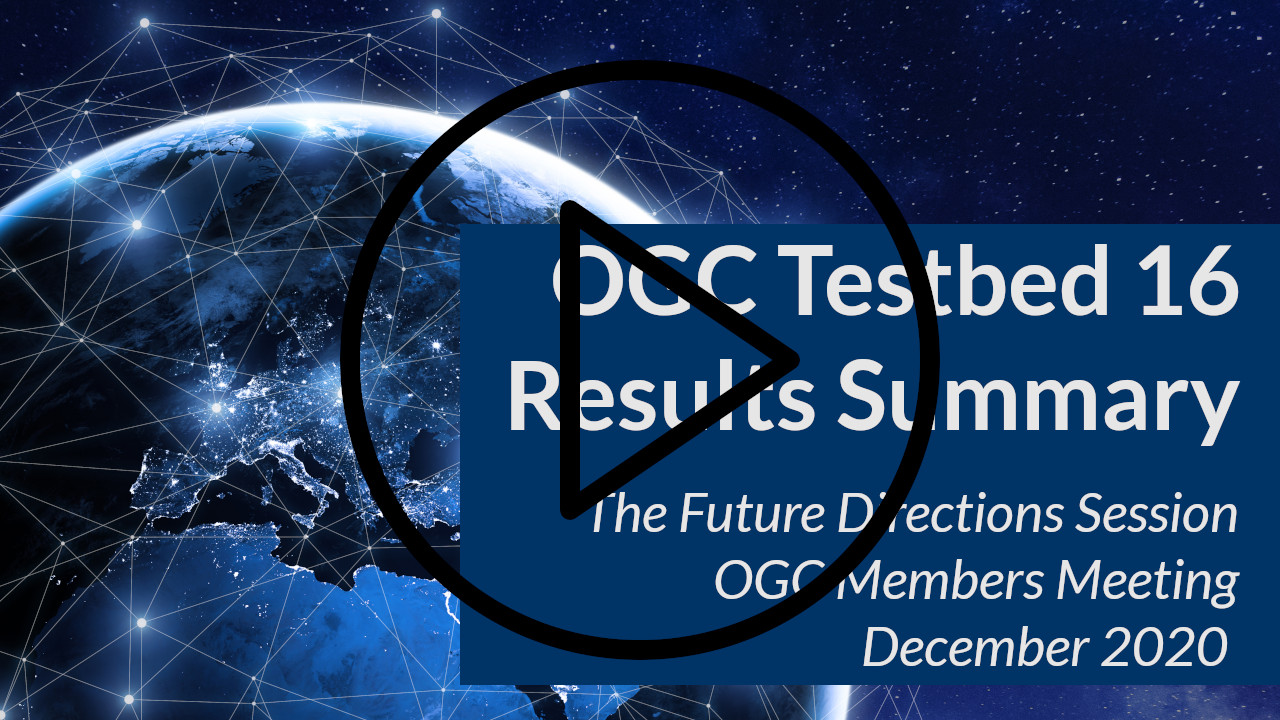OGC recently completed its Testbed-16 Innovation Initiative, a collaborative effort to rapidly prototype, design, develop, and test solutions to problems related to location data. The Testbed addressed stakeholder needs across the entire data lifecycle, from upstream data wrangling to downstream operations and end-use. The results and outcomes of Testbed-16 will shape future geospatial software architectures, processing, and data handling.
Testbed-16 evaluated the maturity of the Earth Observation Cloud Architecture – developed over the last two years as part of various Innovation Program initiatives – which brings the “user to the data” rather than bringing the “data to the user.”
Testbed-16 also explored new levels of interoperable geospatial data processing in the areas of Earth Observation Application Packages with Jupyter Notebooks, Data Access and Processing API for Geospatial Data, Discrete Global Grid Systems (DGGS), Aviation, Machine Learning, Full Motion Video to Moving Features, Analysis Ready Data, Data Centric Security, Federated Security, GeoPackage, and OpenAPI.
Testbed sponsors supported this vision with cost-sharing funds that enabled participants to recoup a portion of their initiative expenses and which partially offset the costs associated with the development, engineering, and demonstration of these cutting-edge solutions.
As an OGC Innovation Program activity, Testbed-16 emphasized the evaluation of what should be in a specification, how the specification should act, and how specification-based software should respond. Draft specifications and change requests are now feeding into the OGC Standards Program, where they are being reviewed, revised, and potentially approved as new international open standards that will impact millions of individuals.
Watch this video of the OGC Testbed-16 Results Summary presentation given by OGC’s Director, Innovation Program & Science, Dr Ingo Simonis, during the Future Directions Session at OGC’s December 2020 Member Meeting.
Other video recordings describing the outcomes and demonstrating the user experiences can be found in this OGC Testbed-16 YouTube Playlist.
Engineering Reports
Testbed-16 undertook research & development (R&D) in real-world environments to advance established and nascent technologies. The outcomes of Testbed-16 are documented in the following OGC Engineering Reports:
- Data Access and Processing (20-016) PDF
- Machine Learning (20-015r2)
- Machine Learning Training Data (20-018) PDF
- GeoPackage (20-019r1) PDF
- Aviation (20-020) PDF
- Data Access and Processing API (20-025r1) PDF
- Federated Security (20-027) PDF
- OpenAPI (20-033) PDF
- Earth Observation Application Packages with Jupyter Notebooks (20-035) PDF
- Full Motion Video to Moving Features (20-036) PDF
- DGGS and DGGS API (20-039r2) PDF
- Analysis Ready Data (20-041) PDF
- Data Centric Security (20-021r2)
Testbed participants successfully developed prototype solutions based on the sponsors’ use cases, requirements, and scenarios described in the Testbed-16 Call for Participation (CFP). Prototype solutions implemented existing OGC standards, including the new OGC API family of standards, as well as new prototype interface and encoding specifications introduced and developed during the testbed. These new specifications may become official, member-approved OGC standards, revisions to existing OGC standards, or best practices for using OGC standards.
OGC Testbeds are part of OGC’s Innovation Program, a collaborative, agile, and hands-on prototyping and engineering environment where sponsors and OGC members come together to address location interoperability challenges while validating international open standards.
Call for Participation and Initiative Execution
Responses to the Testbed-16 Call for Participation were due in early 2020. The physical Kickoff Workshop was replaced with a virtual Kickoff Workshop, a series of online meetings in early April. Testbed-16 officially ended with the publication of the Testbed-16 Engineering Reports.
What’s next?
Testbed-17 is now underway, and will consolidate and capitalize on the findings of Testbed-16. See the Testbed-17 Call for Participation or ogc.org/testbed17 for more information on what technologies and application areas Testbed-17 will advance.
Anybody wishing to learn more about OGC Testbeds, or about the OGC Interoperability Program in general, can contact us using the form on the OGC Innovation Program webpage.
Sponsors
Among the organizations providing Testbed-16 sponsorship are the following OGC members:
|
|
|
|
|
|
|
|
|
|
|
US Federal Aviation Administration (FAA) System Wide Information Management (SWIM) |
|
|
Participating Organizations
The following organizations were selected as initiative participants. Each particpating organization had specific deliverables and tasks based on their responses to the Call for Participation.
- 52 North GmbH
- Arizona State University
- Bocoup
- Compusult Limited
- CRIM
- CubeWerx Inc.
- EOX IT Services GmbH (with contributions from German Aerospace Center – DLR)
- Federation Partners, Inc.
- Geomatys
- GeoSolutions
- George Mason University Center for Spatial Information Science and Systems
- Helyx SIS Ltd.
- HEXAGON
- interactive instruments GmbH
- Image Matters LLC
- keys
- m-click.aero GmbH
- Manaaki Whenua Landcare Research
- Maxar Technologies
- RHEA System S.p.A.
- RSS-Hydro
- Secure Dimensions
- Skymantics, LLC
- Spacebel s.a.
- SURROUND Australia Pty Ltd
- Terradue Srl
- UAB-CREAF

